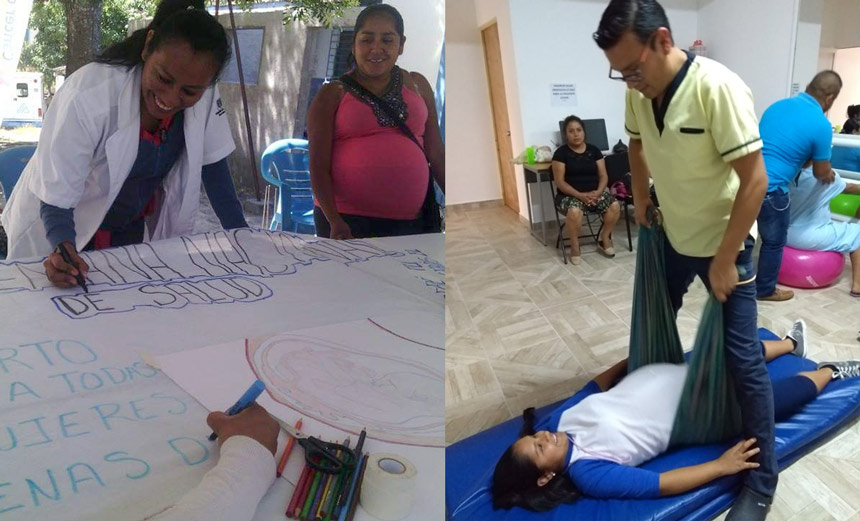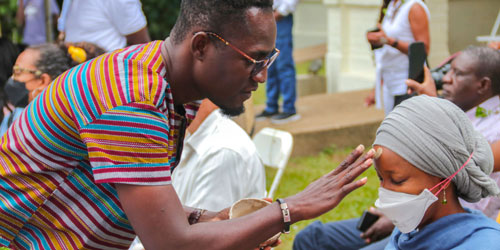COVID-19 presents an opportunity for continued progress in reproductive health by highlighting Mexico’s growing midwifery movement and the potential of telemedicine in abortion care.
In Mexico, where COVID-19 had claimed more than 95,000 lives by mid-November, illness related to the virus has become the leading cause of maternal deaths.
This sobering trend reverses a two-decade decline in Mexico’s maternal mortality rate.
Meanwhile, COVID-19 has complicated other elements of reproductive healthcare in Mexico. Since the outbreak, the lack of information on how to access health services has made acquiring contraception more difficult. Violence against women has increased, according to women’s rights advocates, which poses additional challenges to providing effective maternal and reproductive health care, including abortion.
For all the stress the pandemic is placing on Mexico’s health care system, COVID-19 also may present an opportunity for continued progress in reproductive health by bringing to the forefront the advantages of Mexico’s growing midwifery movement and the potential of telemedicine in abortion care.

Courtesy of UNFPA Mexico
At this prenatal consultation in Tlapa de Comonfort, Guerrero, midwives allow a pregnant woman freedom of movement on the ground for comfort.
Key Turning Point for Midwifery
Before COVID-19, the country began working under an overhauled public health system to make it more patient-centered and focused on community rights. Advocates for midwifery, trained individuals who assist women with pregnancy, childbirth, and postpartum, say the services midwives provide to many women align with the new system’s goals.
“It is a key moment,” said Ilian Blanco, an official with Mexico City’s Ministry of Health. “There is a major integration effort going on right now in Mexico’s public health system to link local community clinics and those with formal surgery services. The vision of an integrated community network that links to hospitals […] works perfectly with our proposed models.”
Maria Antonieta Alcalde Castro of Ipas, an organization that supports girls’ and women’s rights to contraception and abortion, added that: “COVID has shown us that when you have limited resources and a crisis, reaching out to midwives could be a very smart and cost-effective way to ensure that someone will be there when you need their services.”
Midwifery is more efficient, costs less, and typically offers better protection from contagious diseases than conventional hospital deliveries. Midwifery also can distinguish healthy pregnancies and childbirths from those complicated by illness. All are important factors regardless of whether a pandemic has struck.
“The use of midwives not only helps women to have a more humanized birthing process, but overall, it helps them in getting to understand family planning and related health issues,” said Arie Hoeckman, the Mexico representative for the United Nations Population Fund. “The other great benefit is that it takes away this enormous burden on the health care system.”
As part of the effort to mainstream midwifery in Mexico, advocates are speaking with Mexico City and national government agencies and bringing midwives to clinics and hospitals where COVID-19 has created a shortage of doctors and nurses.
“If we are able to implement this model right now, we can show its effectiveness and show how this can reduce maternal mortality and morbidity and that this will not be an additional burden for doctors, but a relief,” Castro said. “We are hopeful that this could become a model replicated in other parts of Mexico.”
At the same time, Ipas is assisting the Ministry of Health with implementing guidelines on providing abortion care during COVID-19 that include telemedicine and self-managed prescription abortion—major steps in making the procedure more accessible.
Like midwifery, telemedicine in abortion care requires fewer resources from doctors and hospitals and less medicine.

Courtesy of UNFPA Mexico
Right: Professional midwives use this community gathering in Costa Chica, Guerrero to provide general information on sexual and reproductive health. Left: A professional midwife in Chilpancingo, Guerrero is teaching psychoprophylaxis, also known as Lamaze, mental and physical techniques to cope with labor pain by using breathing patterns and relaxation.
Challenges and Hope
The major effort to integrate midwifery into Mexico’s health care system, while alleviating pandemic-related reproductive and maternal health challenges, is unfolding in a Mexico City hospital. There, the state Health Ministry is working with Ipas and groups such as CASA and the Asociación de Parteras Profesionales (Association of Professional Midwives) to hire 28 midwives who would provide low-intervention birth services.
“There is recognition that [midwives] actually do alleviate workloads, and there is a degree of satisfaction that is not there without them,” Karla Berdichevsky, Mexico’s Director of Gender Equality and Reproductive Health, said of the re-structured system.
Yet, challenges remain, primarily the low number of certified midwives, Berdichevsky said.
One reason for those low numbers is the issue of how best to integrate traditional, community-educated midwives into the public health system. Most are from Indigenous backgrounds and possess hands-on experience in their communities and crucial cultural and language skills.
Mexico’s bureaucratic public health system and its limitations are additional challenges that the pandemic has exacerbated, said Alina Bishop, a midwife in the Mexican state of Morelos and advocate for the practice in the public health system.
Berdichevsky, who began promoting midwifery from outside the government, now works in the country’s Ministry of Health. Her goal is to reform Mexico’s national health law to include professional midwives.
“We need to have more midwives,” Berdichevsky said. “There is much to be done in terms of the training, and there are some legal aspects that need to be taken care of so that midwives are actually working with complete back up from the legal system.”
Despite challenges, the head of Planning and Evaluation in Mexico City’s Ministry of Health, Dr. Francisco Garrido, sees hope. Midwives in the Mexico City hospital, he said, would be a much-needed, major step toward educating the general population on the benefits of the practice.
“In our case, it was because of the pandemic that we had to make certain changes in the hospitals, which contributed to our speeding up this project,” Garrido said. “We decided that this was a good place for us to start to show that this model of using midwives really works, that it is good for women, and that it responds to their needs.”
Since 2015, MacArthur has invested more than $17 million in 35 organizations—from grassroots groups to multilateral agencies—to achieve progress in growing public acceptance, opening new training programs, and improving midwifery service delivery.




